Safe Lifting


When lifting students, practitioners should consider the body mechanics of both the student and person lifting
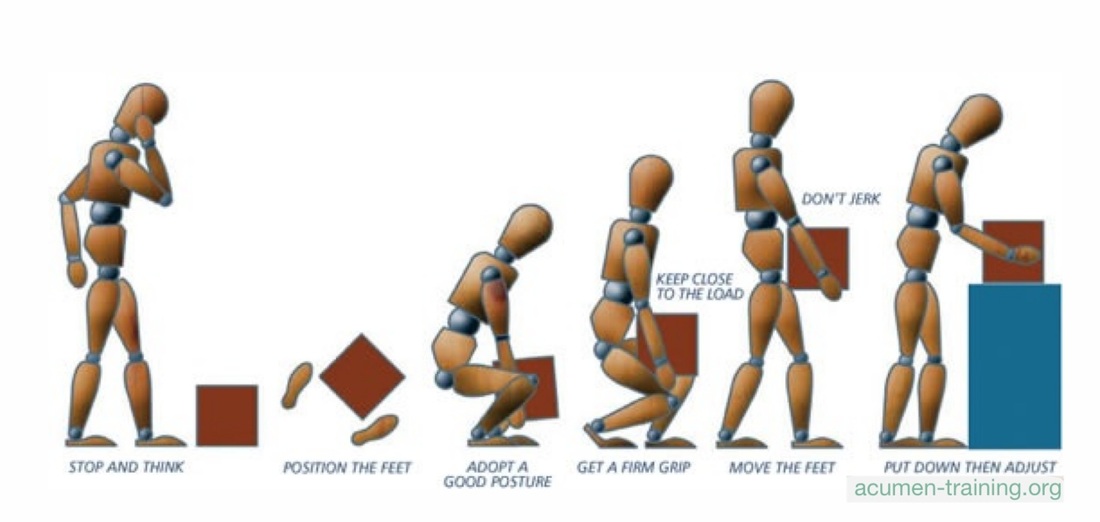
First consider the techniques of good lifting:
- Keep your back straight
- Avoid bending at the waist
- Never twist when lifting
- Keep the student close to your body
- Lift in a smooth motion
Additional good lifting techniques:
The pivot technique can be used when you need to lift a student and then turn in another direction. It involves using safe lifting to lift your student, holding the student close to your body, then turning your foot 90 degrees, and finally turning your other foot in the same direction.
- This technique is intended to avoid twisting
The student and object lifting technique is intended to help lift from the ground up. It involves squatting with a straight back and keeping your feet apart for a wide base of support. Push out your bottom and bring the student as close to yourself as possible. Tense your stomach muscles, look forward, and use your legs to lift.

The tripod lift technique involves positioning yourself on one knee with your foot and knee close to the student, and your back straight. Slide the student up your leg and with your head forward, butt out, and back straight, lift the student onto your opposite thigh. Put both your forearms under the student and bring them close to your body. Look ahead, and lift upwards using your legs.
Overall remember to:




Lifting and Carrying Very Young Children
When lifting and carrying very young students with abnormal muscle tone and reflexes, practitioners should make sure that students are “out of pattern” and that they are assisting as much as possible.
- Always take into consideration tone and reflexes when lifting students.
Lifting Students with Hypotonia
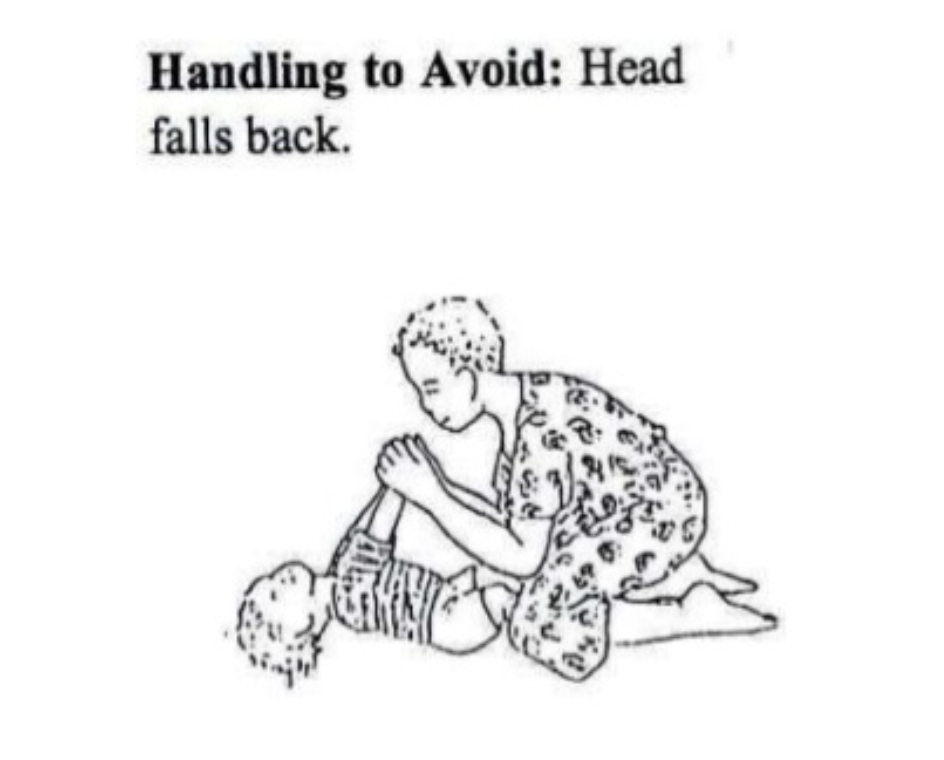
Avoid pulling on the arms when lifting, which can cause the head to fall back and weak shoulder muscles to dislocate.
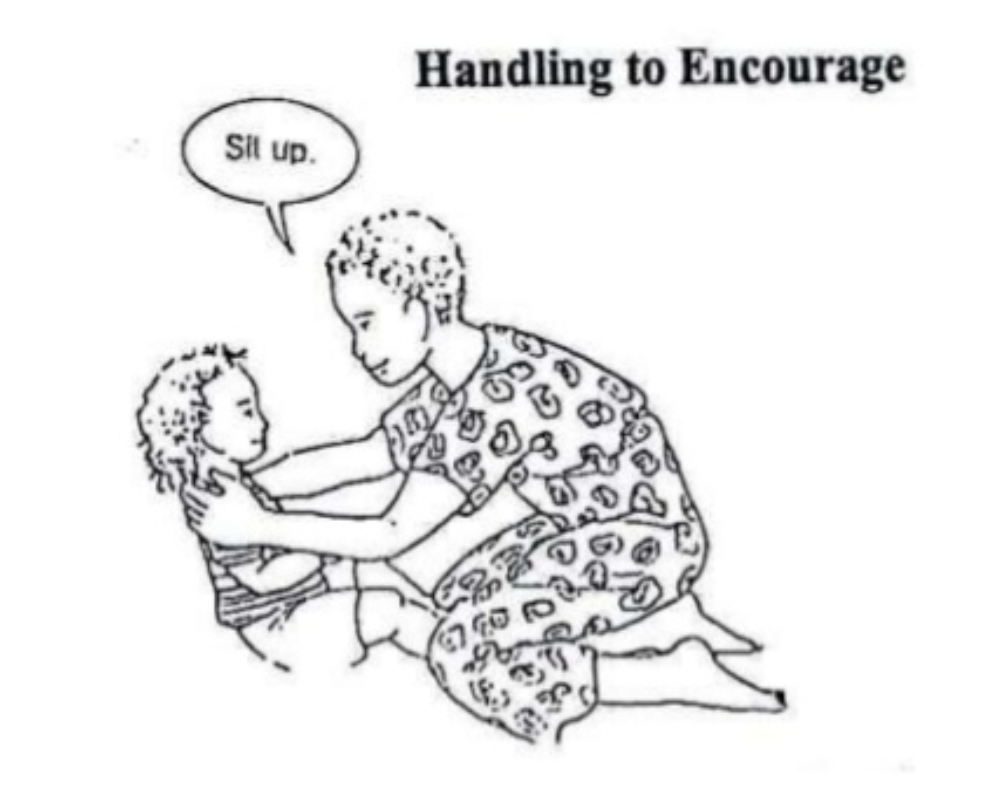
Provide support at the shoulders in order to encourage head control.
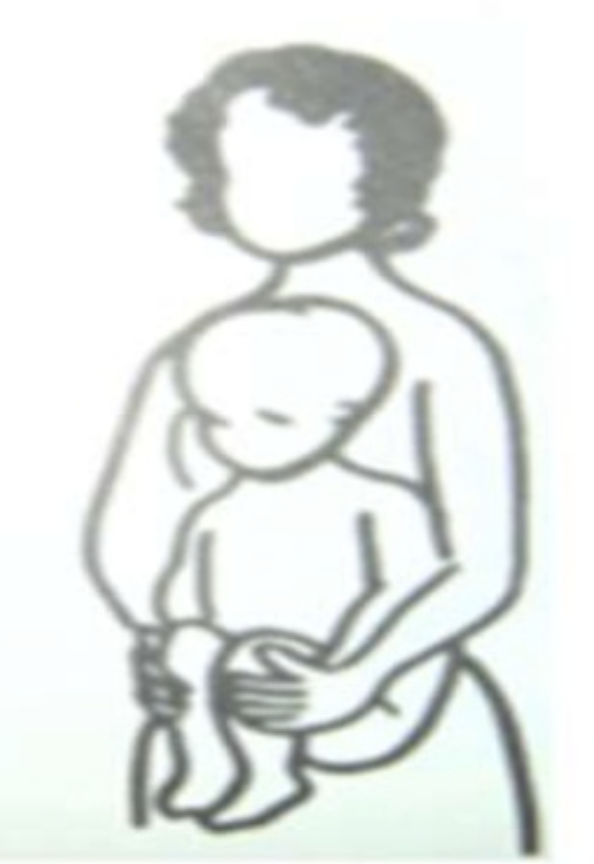
Carry with the head and back supported if the student is unable to lift their head independently.
Have them use their own muscles to hold themselves in an upright position.
Hypertonia: Flexor Tone

When carrying a student with flexor tone keep their arms and legs extended to keep them “out of pattern”.
Hypertonia: Extensor Tone

Make sure legs are flexed before lifting students with extensor tone.
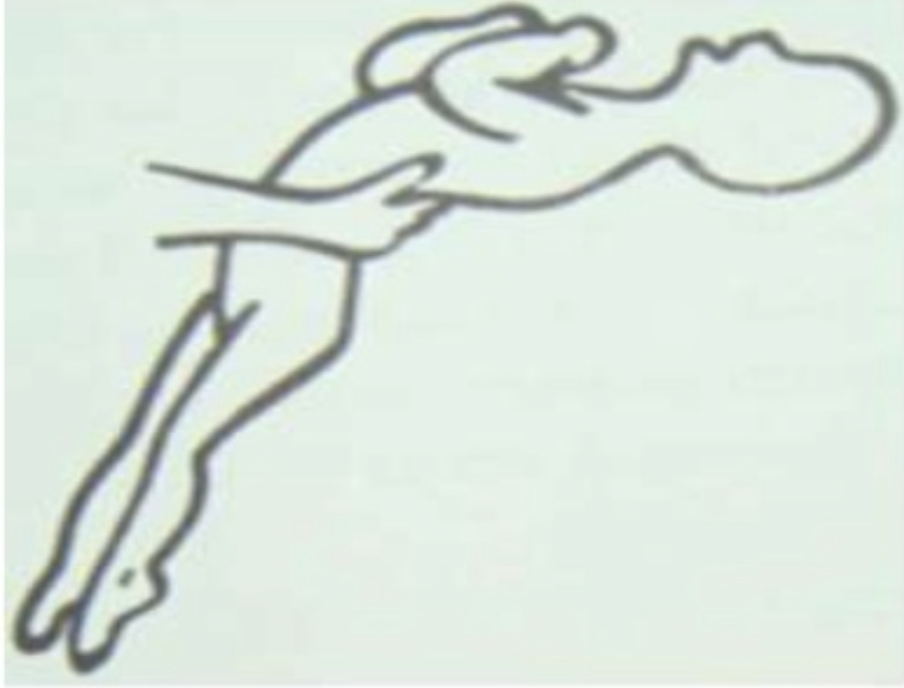
Do not lift these student when their body is in an extension patter.

Carry students with their arms and/or legs flexed to keep them “out of pattern“.

There are many correct ways to carry a student with extensor tone.
Fluctuating/Athetoid Tone
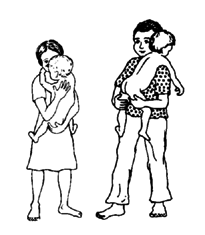
Carry students with fluctuating/athetoid tone like this to encourage head control and to keep the body in a symmetrical position.
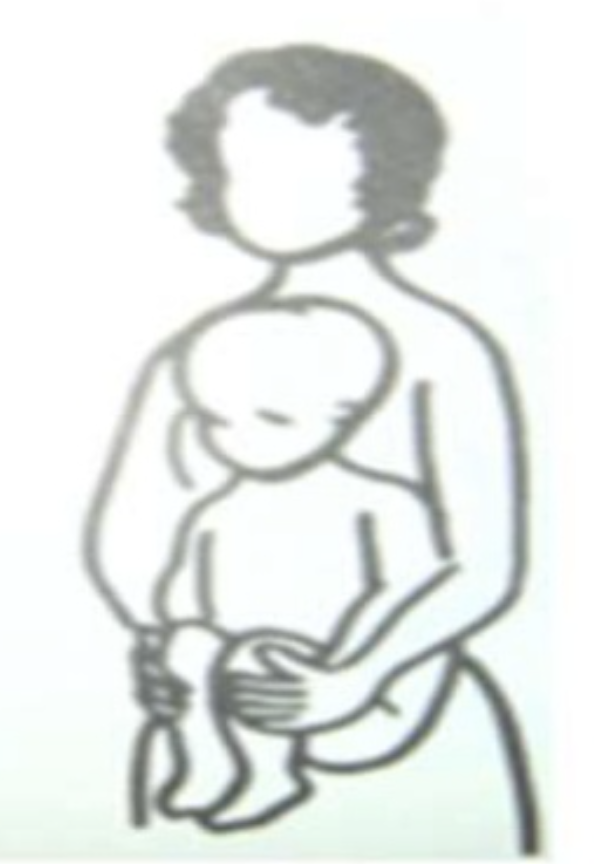
Students with fluctuating/athetoid tone can also be carried with their head and back supported to keep the head in alignment and encourage them to hold themselves upright.
Lifting Older Students

Whenever available, always use a mechanical lift when lifting older students with OI.
Use a dependent stand pivot transfer for students who cannot assist in moving from one seat to another.
Use an assisted stand pivot transfer for students who are able to bear weight on their legs and assist in transferring from on seat to another.
A two person maximum assist lift can be used to lift students who cannot assist in lifting themselves.
Bower, E. (2009). Finnie’s handling the young child with cerebral palsy at home (fourth edition). Elsevier Ltd.
Hinchcliffe, A. (2003). Children with cerebral palsy: A manual for therapists, parents, and community workers. ITDG Publishing.
